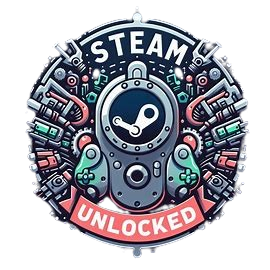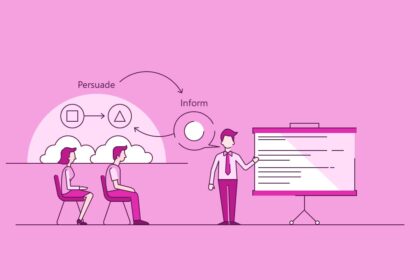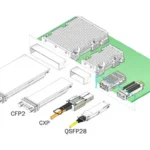In the competitive landscape of business, creating engaging visual presentations is not an art, but a strategic need. Whether it is a pitch to investors, training new hires, or promoting a product, how one presents an idea will go a long way in determining audience response. A good presentation would be able to not only drive your point across but also inspire and engage your audience toward the course of action. From making a presentation from its ideation stage to designing elements, this article will present how you can create visually appealing presentations that truly convert and help your audience pay attention. Further, other helpful tools such as templates for a job offer letter templates can be helpful to complement your overall communication strategy.
1. Know Your Audience
First, understand who the audience is. Understand their interests, pain points, and what they hope to gain from the presentation. Are they industry experts or new to the topic? You need to mold the content to meet the audiences’ needs.
You may conduct surveys, interviews, or even research their interests through social media networks to understand what they would want. You can make informed decisions based on this information and develop and design content in a manner that best appeals to your audience.
2. Define Your Key Message
Before starting to design any successful presentation, define what your key message will be. The core message you want to present to them should be simple, concise, and memorable. This provides the very foundation on which the presentation design will be based and will help you keep your content focused.
A very good start is the summarizing of your key message in one sentence. Ask yourself: What do I want my audience to remember after this presentation? This clarity gives direction regarding the creation of content and visual design so that every element reinforces your key message.
3. Develop a Focused Outline
Once you have identified your audience and key message, outline what you want to say. A formalized outline will help you put your thoughts together in a logical sequence that will be easy for your audience to follow.
Divide your presentation into clear sections:
– Introduction: Present your key message and what the audience can expect.
– Body: Mention the key points of the topics that you are going to talk about in your presentation. Keep the flow by providing headings and subheadings.
–Conclusion: Summarize your key points and include a call to action.
This will give a good flow to let the audience effectively absorb the information.
4. Use Storytelling Visually
Presentation and Engagement: Visualization of stories is considered one of the most powerful tools when it comes to creating an engaging presentation. Rather than a text-based presentation of your data, make use of images, videos, and infographics to get the point across. In simple words, it not only enhances the understanding of information but also keeps your audience’s attention.
Here is how you can tell a visual story:
– Use Relevant Images: High-resolution images related to the content fill up the screen. Avoid using generic stock photos that may dilute your message.
– Infographics: These are great for visually representing information, be it complex data or a procedure. Use them to summarize information or to depict a process.
– Add Videos: Add small videos that trace over salient points of your presentation or offer testimonials. Videos have that tendency to tug at the heartstrings of your audience.
5. Design for Impact
Design is at the very core of a presentation. Some of the key design principles include:
Harmony: Hold on to one or two colors, one font type, and a consistent layout. This will give cohesion and add to professionalism.
White Space: Avoid cluttering your slides. The appropriate use of white space draws attention to key elements that make your content more readable.
Typography: Employ legible fonts and establish hierarchy: headings, subheadings, and body text will aid in guiding the viewer’s eye. Keep in mind font size must be readable within the context in which your work will be viewed.
6. Present Data with Punch
The information is interesting. Not taking the time to show this information is a guaranteed way to get your audience to change the channel. Charts and graphs are great ways to take your information and visually represent it in a way that is readable.
Here are some ways in which you can effectively utilize data:
- Simplify complex data: Take a lot of information and break it into smaller pieces, that are manageable. Break up text with lists, short sentences, and visual flow.
- Highlight key figures: Find the main statistics to state your story. Use color or size to bring the most important figures to the fore.
7. Practice Your Delivery
Even the best presentation will not work without proper delivery. Practice many times so that you can deliver your presentation smoothly. For improving your presentation skills, here are some tips:
– Rehearsal before an Audience: Making a presentation before colleagues or friends will help in getting valuable feedback and being more comfortable with your presentation material.
- Watch Your Body Language: Be aware of body language and facial expressions. Use eye contact and gestures to allow your audience to stay hooked to you.
- Manage Your Time: Pay attention in your presentation for the time taken. Plan the presentation so that there is ample time left to discuss the end and give time for questions if required.
8. Engage Your Audience
Engagement is the way to conversion. Activate the audience by asking, discussing, or using interactive features while presenting. Now, some of the various ways to activate your audience have been listed below:
– Q and A Session: Ask interesting questions related to your topic for participation from an audience.
– Polls/Quizzes: If possible, use technology to conduct instant polls or quizzes during your presentation. This would create a rather relaxed and entertaining atmosphere.
– Tell Personal Stories: You may always use personal examples, which could make the presentation sound more human and appealing to the audience.
9. Include a Strong Call to Action
You need to have a call to action right at the end of your presentation. Your call to action should be concise, clear, and specific to your key message. Whether it be to sign up for a newsletter, request a demo, or give feedback, ensure that follow-up actions are clear.
The CTA can make all the difference in your audience’s decision-making process and prompt them to take the desired action.
10. Collect Feedback and Improve
After the presentation, solicit feedback from your audience. You can achieve this with questionnaires or casual conversations. By learning what worked and what didn’t work with the audience, you’ll know how to make adjustments in future presentations.
Conclusion
Creating alluring visual presentations that convert is a core modern business skill. Knowing your audience, along with what your key message is, enables you to construct presentations that do much more than inform, but inspire people to act. Practice to deliver, engage, and make sure you have a strong call to action to have the greatest effect. Use these strategies and you will be off to a good start in creating presentations that leave an impact. Whether you present to your stakeholders, employees, or customers, the right presentation can make all the difference. With resources like sample job offer letters thrown into your overall strategy mix, being even more effective in your communication can round off your professional efforts and ensure they are successful.




